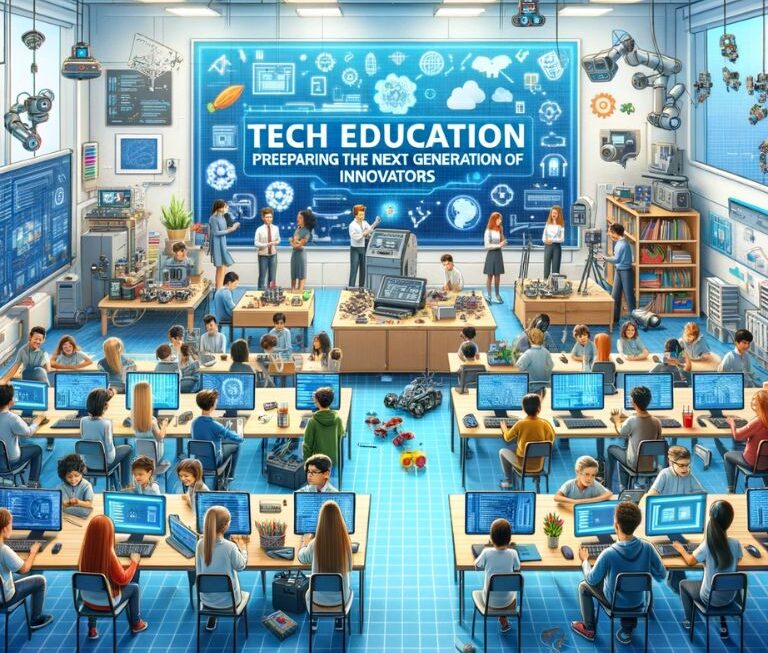In recent years, Google has consistently led the charge in transforming the search experience, continually integrating advanced technologies to make information more accessible and user experiences more personalized. The latest updates to Google’s search features in 2023 represent a significant leap forward, marking a transition from conventional search methodologies to a more dynamic, AI-driven approach. This section delves into these recent updates and explores their implications for users worldwide.
The Evolution of Google Search
Google’s search engine has always been at the forefront of leveraging technology to improve user experience. Over the years, we have seen Google introduce various features like voice search, image search, and the integration of AI to enhance search result accuracy. The recent updates, however, are not just incremental improvements but a comprehensive overhaul that leverages cutting-edge AI technology to reshape how users interact with the vast repository of online information.
AI at the Core of the New Search Experience
Central to Google’s latest updates is the integration of artificial intelligence, particularly through tools like Bard, their conversational AI, and the Search Generative Experience (SGE). Bard, an experimental conversational AI service powered by LaMDA (Language Model for Dialogue Applications), aims to provide more nuanced, conversational, and accurate responses to user queries. This AI-driven approach is not just about answering questions but about understanding the intent and context behind them, thereby delivering more relevant and comprehensive information.
Personalization and User Engagement
One of the most noticeable changes in Google’s search features is the emphasis on personalization. The introduction of the ability to ‘follow’ topics or interests allows users to receive content that is specifically tailored to their preferences. This feature ensures that users get the most relevant information on their interests, from sports teams to cooking recipes, directly in their search results. This level of customization represents a shift from a one-size-fits-all information delivery to a more user-centric approach.
Personalized Search Experience: Tailoring to Individual Preferences

The advent of personalized search experiences marks a pivotal moment in the evolution of Google’s search capabilities. This section delves into how Google’s 2023 updates enhance user experience by tailoring search results to individual preferences, making each search not just informative but uniquely relevant to each user.
Embracing User Preferences
Google’s new ‘follow’ feature is a significant stride in personalization. It allows users to tailor their search experience based on their interests. This feature operates on a simple yet effective principle: users can select topics they are interested in, such as sports teams, cooking styles, or even specific health topics, and Google will prioritize related content in their search results.
The Mechanics of Personalization
The mechanism behind this personalized experience is rooted in Google’s advanced algorithms and AI technologies. These systems analyze a user’s search history, clicked links, and followed topics to construct a tailored information feed. This approach ensures that the content delivered is not only relevant but also timely and engaging.
Enhancing User Control
A critical aspect of this personalization is user control. Google ensures that users can easily manage their interests – they can update, add, or remove followed topics anytime. This flexibility empowers users to curate their search experience continually.
The Impact of Personalization
The impact of these personalized features on the user experience is multifaceted:
- Relevance: Search results become more aligned with the user’s interests and needs.
- Efficiency: Reduces the time and effort needed to find pertinent information.
- Engagement: Increases user engagement by providing content that resonates with their preferences.
Harnessing AI for Enhanced Search Results
The integration of artificial intelligence (AI) into Google Search is arguably the most groundbreaking of all the recent updates. This section explores how Google is utilizing AI technologies, particularly through tools like Bard and the Search Generative Experience (SGE), to revolutionize the search process, making it more intuitive, accurate, and user-friendly.
AI as the Backbone of Modern Search
At the heart of Google’s AI-driven search experience is the implementation of Bard and SGE. Bard, powered by Google’s advanced Language Model for Dialogue Applications (LaMDA), is designed to provide nuanced and conversational responses. It represents a shift from keyword-based search results to context-aware interactions, mirroring a natural, human-like conversation.
Key Components of Google’s AI-Driven Search:
- Bard: Focuses on delivering conversational, contextually relevant search responses.
- SGE (Search Generative Experience): Enhances search with AI-powered summaries, image generation, and customizable drafts.
Transforming Search Queries into Conversations
Bard transforms the way users interact with search engines. Instead of sifting through pages of results, users can now engage in a dialogue with the search engine. This conversational approach is particularly effective for complex queries where context and nuance are crucial.
Enhancing Accuracy and Relevance
The AI systems underpinning Google’s search tools are constantly learning, adapting to new information, and refining their understanding of user queries. This ongoing learning process ensures that the search results are not only relevant but also up-to-date and accurate.
Personalized and Dynamic Search Experiences
Google’s AI-driven search is not static; it adapts to each user, creating a personalized and dynamic search experience. The AI analyzes past interactions and preferences to tailor future search results, making each interaction more relevant to the individual user.
Innovative Image Generation within Search
Google’s 2023 updates have introduced an exciting feature that significantly enhances the visual aspect of the search experience: AI-powered image generation. This section delves into how Google has integrated its Imagen text-to-image model into the Search Generative Experience (SGE), transforming the way users interact with and utilize images in their searches.
The Advent of AI-Powered Visual Search
The integration of image generation technology into Google’s search tools marks a major advancement in how users can access and create visual content. The Imagen text-to-image model, a pivotal element of this feature, allows users to generate images based on textual prompts, offering a new level of interactivity and creativity in searches.
How Imagen Transforms Text into Images
Imagen, Google’s sophisticated text-to-image model, uses advanced AI algorithms to interpret textual prompts and generate corresponding images. This process involves understanding the nuances of the text and translating them into visual representations, making it possible for users to visualize concepts and ideas that may be difficult to describe in words alone.
Enhancing Search with Visual Creativity
This feature opens up new possibilities for users, especially in fields like design, education, and content creation. For instance, a user searching for ‘sustainable city concepts’ can not only read about different ideas but also visualize them through AI-generated images, enhancing their understanding and engagement with the topic.
Implementing Safe and Responsible AI
Given the potential for misuse, Google has implemented strict policies and filters to ensure the responsible use of its image generation technology. These measures are designed to prevent the creation of harmful or inappropriate content, maintaining a safe and respectful search environment.
Integrating Interactive Tools in Search

Google’s 2023 updates to its search engine have not only enhanced the AI and visual components but also introduced a range of interactive tools, fundamentally changing the way users interact with search results. This section focuses on these new interactive features, particularly the conversational mode in Search and the integration of customizable drafts within the Search Generative Experience (SGE), highlighting their impact on user engagement and the overall search process.
The Rise of Conversational Search
The conversational mode in Google Search represents a significant shift from traditional, static search queries to a more dynamic, dialogue-based interaction. Users can now engage in a back-and-forth conversation with the search engine, refining their queries and receiving more targeted responses.
Customizable Drafts within SGE
Another innovative feature is the ability to create and customize drafts within SGE. This tool allows users to generate written content based on their search queries, which can be edited and tailored to their specific needs. Whether drafting an email, creating a report, or simply exploring ideas, this feature adds a new dimension to the search experience.
The Impact on User Experience
These interactive tools transform the search experience from a one-way information retrieval process to a two-way interactive session. Users are no longer passive recipients of information but active participants in the search process, leading to higher engagement and satisfaction.
Key Impacts:
- Enhanced User Engagement: Interactive features encourage users to be more involved in their search, leading to a richer and more satisfying experience.
- Increased Efficiency: The ability to refine searches through conversation and customize drafts saves time and effort, making the search process more efficient.
- Personalized Outcomes: Interactive tools offer a higher degree of personalization, tailoring search results and content to the user’s specific needs and preferences.
Improving Information Accessibility and Diversity
Google’s recent updates go beyond enhancing search functionality; they also focus on making information more accessible and diverse. This commitment reflects in the myriad of features introduced in 2023, designed to broaden the scope of information available to users and ensure a more inclusive search experience.
Prioritizing Diverse Perspectives
One of the key aspects of Google’s approach to enhancing search is the inclusion of diverse perspectives in search results. This initiative is crucial for offering a comprehensive view of topics and aiding users in understanding different facets of a subject.
Expanding Reach to Cater to Varied User Needs
Google’s commitment to accessibility is evident in the way it tailors search experiences to cater to different user groups. This includes optimizing search for users with different language preferences, cultural backgrounds, and even varying levels of internet access.
The Role of AI in Enhancing Accessibility
AI plays a pivotal role in improving information accessibility. By leveraging advanced algorithms, Google can present users with information that is not only relevant but also accessible, regardless of their background or location.
Impact of AI on Accessibility:
- Automated Translation: AI-powered translation tools make content available across different languages.
- Content Adaptation: AI algorithms can adapt content to suit different reading levels and cultural contexts.
Conclusion
Google’s 2023 updates mark a significant leap in the evolution of online search. Integrating advanced AI, enhancing personalization, and introducing innovative features like image generation, Google is transforming how we interact with digital information. These developments reflect a shift towards a more intuitive, inclusive, and interactive search experience.
Looking ahead, Google’s focus on emerging technologies and ethical AI practices indicates a commitment to continuous innovation. This forward-thinking approach promises to further enrich user experiences and adapt to the ever-evolving digital landscape.




